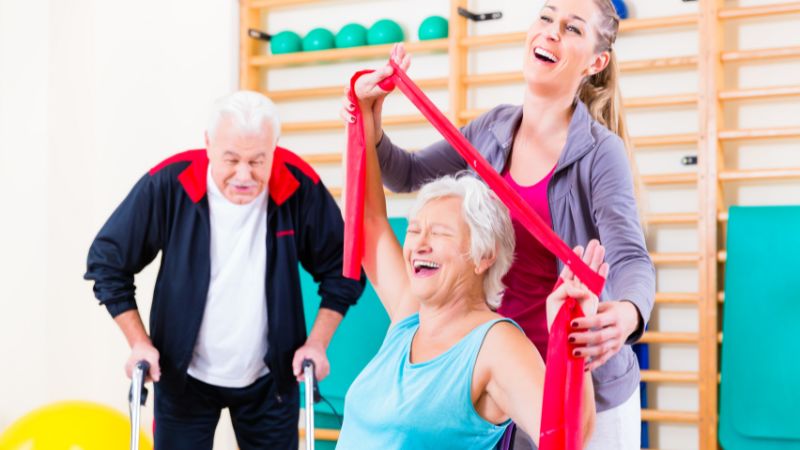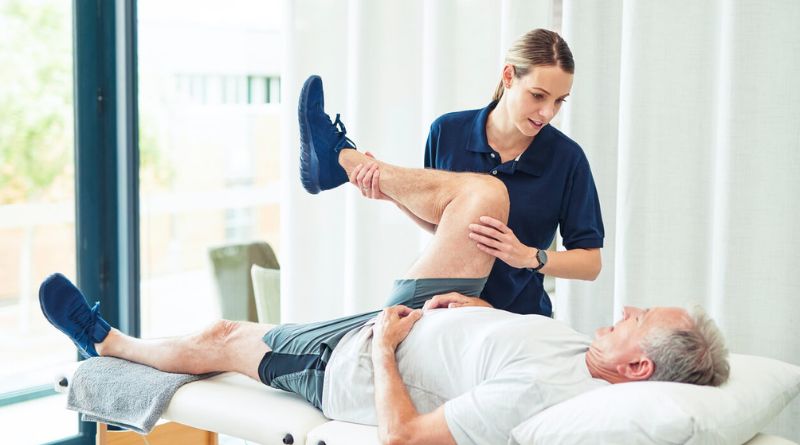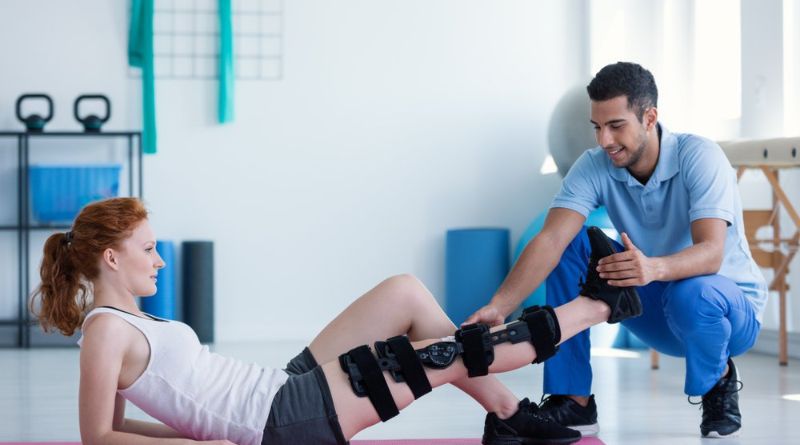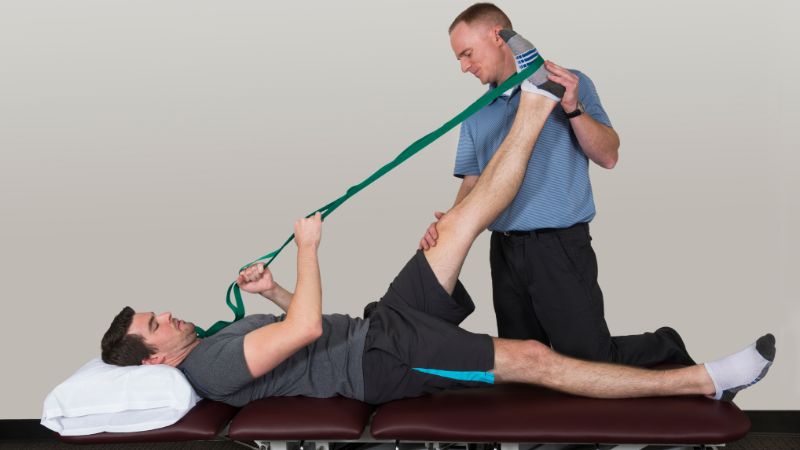As we age, maintaining physical health becomes increasingly critical. For many seniors, physical therapy (PT) is a vital component of their health regimen, addressing mobility, pain management, strength, and overall well-being. However, adherence to PT programs can be challenging for older adults due to various factors such as mobility issues, forgetfulness, and lack of motivation. Best Ways In-Home Care Can Help Seniors Stick to Physical Therapy Programs becomes essential in this context. In-home care can play a crucial role in overcoming these challenges, providing the necessary support to ensure seniors reap the full benefits of their PT programs. This support system can enhance adherence to PT, improve health outcomes, and significantly boost the quality of life for seniors.
Best Ways In-Home Care Can Help Seniors Stick to Physical Therapy Programs
Personalized Attention and Supervision

In-home care offers seniors the advantage of personalized attention and supervision during their physical therapy sessions. Unlike clinical settings where time constraints may limit one-on-one interaction, caregivers can focus exclusively on the senior’s needs and progress. This personalized approach ensures that exercises are performed correctly and safely, minimizing the risk of injury. Caregivers can closely monitor the senior’s form, provide immediate feedback, and make necessary adjustments as per the physical therapist’s guidance. This attention not only enhances the effectiveness of the therapy but also boosts the senior’s confidence in their ability to perform the exercises. By establishing a supportive and encouraging environment, caregivers help seniors stay motivated and committed to their PT program, ultimately leading to better outcomes in terms of mobility, pain management, and overall physical health.
Encouragement and Motivation
Maintaining motivation is crucial for seniors undergoing physical therapy, as the journey to recovery can often be challenging and slow-paced. In-home caregivers play a pivotal role in providing consistent encouragement and motivation throughout the process. They celebrate small milestones and progress, reinforcing the senior’s sense of accomplishment and determination. This positive reinforcement helps seniors stay focused on their goals and committed to their PT program. Caregivers also offer emotional support, addressing any fears or frustrations the senior may have about their progress. By fostering a supportive relationship, caregivers build trust and rapport with seniors, making the therapy sessions more enjoyable and productive. Overall, the encouragement and motivation provided by in-home caregivers are instrumental in helping seniors overcome obstacles and achieve optimal results from their physical therapy.
Convenience and Comfort
One of the significant advantages of in-home care for physical therapy is the convenience and comfort it offers seniors. Traveling to a clinic for PT sessions can be daunting, especially for those with mobility issues or transportation challenges. In-home care eliminates this barrier by bringing the therapy sessions directly to the senior’s home environment. This not only saves time and effort but also allows seniors to perform their exercises in a familiar and comfortable setting. By reducing stress associated with travel, in-home caregivers help seniors approach their PT program with a positive mindset. This convenience encourages regular participation in therapy sessions, leading to better adherence and improved outcomes over time. Additionally, being at home provides seniors with a sense of autonomy and control over their health, which can further enhance their motivation to engage in physical therapy activities.
Customized Exercise Plans
In-home caregivers work closely with physical therapists to develop customized exercise plans tailored to the specific needs and abilities of each senior. These personalized plans take into account factors such as existing health conditions, mobility limitations, and rehabilitation goals. Caregivers ensure that the exercises prescribed by the physical therapist are adapted to the senior’s current physical condition and are performed correctly. They provide hands-on assistance, demonstrate proper techniques, and monitor progress closely. This tailored approach not only maximizes the effectiveness of the therapy but also minimizes the risk of injury or discomfort. By adjusting the intensity and frequency of exercises as needed, caregivers help seniors progress steadily toward their rehabilitation goals. Customized exercise plans are essential in ensuring that physical therapy is both safe and beneficial for seniors, promoting long-term adherence and overall well-being.
Consistent Scheduling

Consistency is key to the success of any physical therapy program, and in-home caregivers play a crucial role in maintaining a regular schedule of therapy sessions for seniors. Caregivers help seniors adhere to a structured routine by reminding them of upcoming appointments, preparing them for therapy sessions, and ensuring that all necessary equipment is readily available. This consistent scheduling eliminates the guesswork and uncertainty associated with therapy sessions, making it easier for seniors to commit to their prescribed exercises. By establishing a predictable routine, caregivers create a sense of stability and predictability that enhances the senior’s motivation and engagement in physical therapy. This regularity contributes to better overall outcomes by ensuring that seniors receive the full benefits of their PT program over time.
Also Read: Top 11 Physical Therapy Treatment For Neck And Shoulder Pain
Assistance with Daily Living Activities
In addition to supporting physical therapy exercises, in-home caregivers assist seniors with daily living activities that complement their rehabilitation efforts. These activities may include meal preparation, assistance with personal hygiene, medication reminders, and mobility support around the home. By addressing these daily needs, caregivers ensure that seniors have the energy and resources to participate fully in their physical therapy program. This holistic approach to care promotes overall well-being and independence, allowing seniors to focus on their recovery without the added stress of managing household tasks. Caregivers also observe how daily activities impact the senior’s ability to perform PT exercises, providing valuable feedback to physical therapists and adjusting the care plan as needed. By integrating support for daily living activities with physical therapy, caregivers contribute to a comprehensive and effective rehabilitation strategy for seniors.
Monitoring and Reporting Progress
In-home caregivers play a vital role in monitoring the progress of seniors throughout their physical therapy journey. They observe the senior’s performance during therapy sessions, noting improvements, challenges, and any concerns that may arise. Caregivers communicate regularly with physical therapists and healthcare providers, providing detailed updates on the senior’s progress and adherence to the PT program. This ongoing monitoring ensures that therapy sessions are effective and that any adjustments to the exercise plan can be made promptly. Caregivers also act as advocates for the senior’s health, identifying potential issues early and collaborating with the healthcare team to address them. By maintaining open lines of communication, caregivers facilitate a collaborative approach to care that prioritizes the senior’s well-being and rehabilitation goals.
Companionship and Social Interaction
Loneliness and social isolation can negatively impact a senior’s motivation and overall well-being, especially during a physical therapy program. In-home caregivers provide valuable companionship and social interaction, creating a supportive environment that enhances the senior’s emotional and mental health. Caregivers engage seniors in meaningful conversations, activities, and outings, fostering a sense of connection and belonging. This companionship makes physical therapy sessions more enjoyable and encourages seniors to actively participate in their exercises. Caregivers also serve as companions during therapy sessions, providing encouragement and support throughout the process. By building a trusting relationship with the senior, caregivers contribute to a positive atmosphere that promotes motivation and perseverance. The social interaction provided by caregivers is integral to the success of physical therapy programs, as it contributes to the overall well-being and quality of life of seniors.
Creating a Safe Environment

Safety is paramount during physical therapy exercises, especially when performed at home. In-home caregivers take proactive measures to create a safe environment that minimizes the risk of injury and promotes confidence in seniors. They assess the home for potential hazards, such as slippery floors or obstacles in pathways, and make necessary modifications to ensure a safe exercise space. Caregivers also assist seniors with proper body mechanics and posture during exercises, reducing the likelihood of strain or discomfort. By prioritizing safety, caregivers instill a sense of security and trust in seniors, allowing them to focus fully on their rehabilitation goals. Regular safety assessments and adjustments to the home environment ensure ongoing protection and support for seniors participating in physical therapy programs at home.
Conclusion
In conclusion, in-home care emerges as a transformative solution in ensuring seniors adhere to their physical therapy programs effectively. By providing personalized attention, motivation, and a safe, comfortable environment, caregivers empower seniors to achieve better health outcomes and maintain independence. The convenience of home-based therapy eliminates logistical barriers, while caregivers’ support in daily activities complements rehabilitation efforts comprehensively. Regular monitoring and collaboration with healthcare professionals further optimize therapy plans, ensuring they remain tailored and effective. Moreover, the companionship and social interaction offered by caregivers enhance seniors’ emotional well-being, contributing to a holistic approach to health care. Ultimately, in-home care not only facilitates physical recovery but also nurtures a supportive environment where seniors thrive.
FAQs
How does in-home care improve adherence to physical therapy?
In-home caregivers provide personalized attention, encouragement, and a safe environment, making therapy sessions more accessible and enjoyable for seniors, thus improving adherence.
What qualifications should in-home caregivers have to support physical therapy?
Caregivers should be trained in basic physical therapy exercises, safety protocols, and communication with healthcare professionals to effectively support seniors in their therapy programs.
How can family members support in-home care for seniors undergoing physical therapy?
Family members can participate by staying informed about the therapy plan, offering encouragement, and ensuring the home environment is conducive to safe exercise and recovery.





